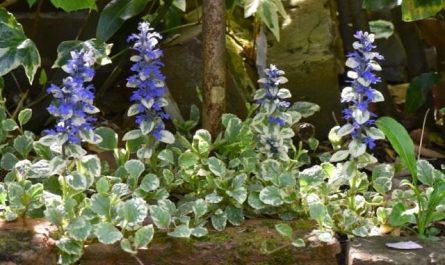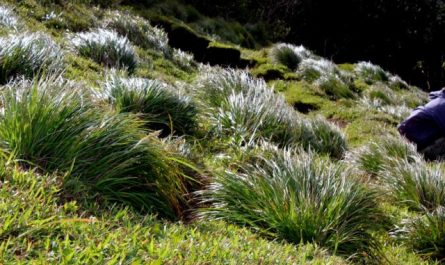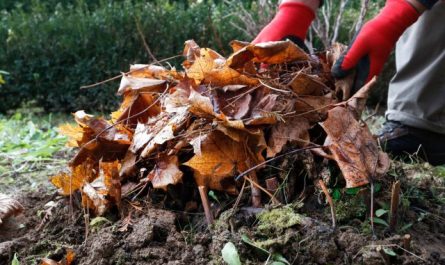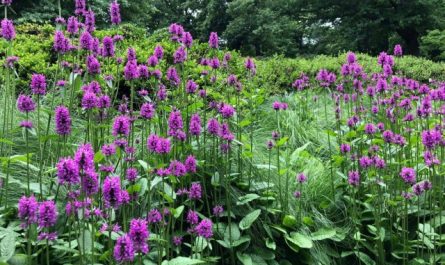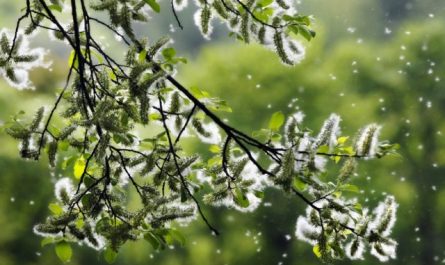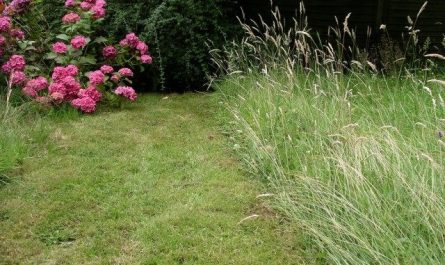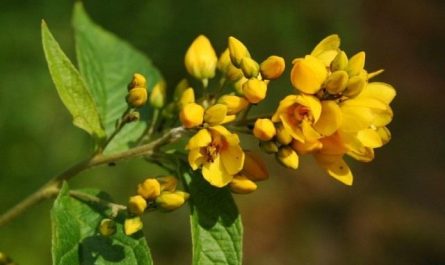The health of roses depends on various factors. This includes the choice of planting site, proper soil preparation, timely watering, pruning, fertilizing… However, despite all the care, sometimes our roses still get sick – they change the color of their leaves, do not form buds well, and do not grow. The cause of these manifestations are factors beyond the control of the gardener – weather conditions. But you can influence the condition of the plants in such a situation. The main thing is to understand what is happening and how to act in a particular case. Let’s figure out what non-infectious diseases roses can get.
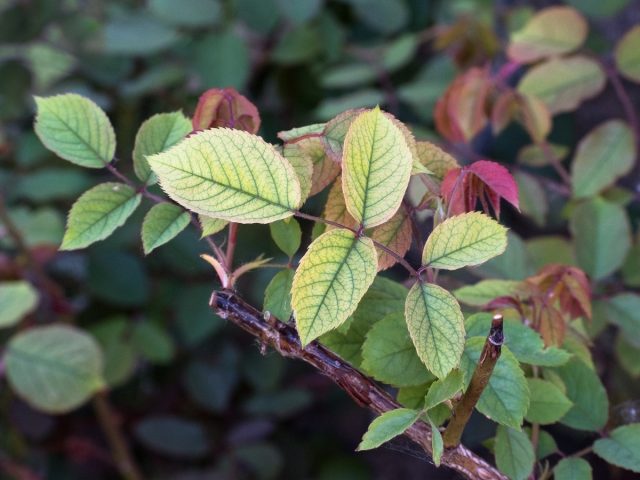
Roses may exhibit symptoms throughout the growing season. chlorosis. It is determined by the change in the color of the foliage of plants to yellow, cream or white. The main reason for this phenomenon is the lack of nutrition entering the plant’s body, which causes slow formation of chlorophyll and a decrease in the activity of photosynthesis. Plants affected by chlorosis not only look unsightly, but also show signs of weakness – they slow down in growth, show weak flowering, become more vulnerable to diseases, and tolerate winter frosts worse.
But chlorosis is not a specific disease. It can be different. Plants can react by changing the color of the foliage to a lack of iron, manganese, zinc, magnesium, boron, and even to unfavorable weather conditions. Therefore, when examining a bush, it is necessary to pay attention to a number of factors at once and only after a full analysis make a decision on fertilizing. For example:
- season – spring, summer, autumn;
- weather conditions – rain, persistent drought;
- soil type;
- how long ago the plant was planted;
- grafted or own-rooted seedling.
1. Nitrogen deficiency
The first signs of nitrogen deficiency are found on the lower foliage of the bush on old leaves in the form of uneven lightening of the tissues. At first the leaf becomes lighter, becomes light green, then begins to turn yellow, and finally the entire plant turns yellow. The growth of the bushes slows down, young shoots grow hard and thinner. Flowering begins earlier than usual.
Most often, this type of chlorosis manifests itself in the spring during prolonged rains, when the microelements necessary for plants are washed out by moisture into deeper layers of the soil. And also during periods of prolonged moisture deficiency, when the living conditions of soil microorganisms are disrupted. Often occurs on too acidic soils.
What to do? If the reason for the lack of nitrogen is too much rain, nothing needs to be done. The rains will stop and the plants will recover. If there is a lack of moisture, it is necessary to establish watering. For fertilizing, you can use ammonium nitrate, urea, calcium nitrate, ammonium sulfate.
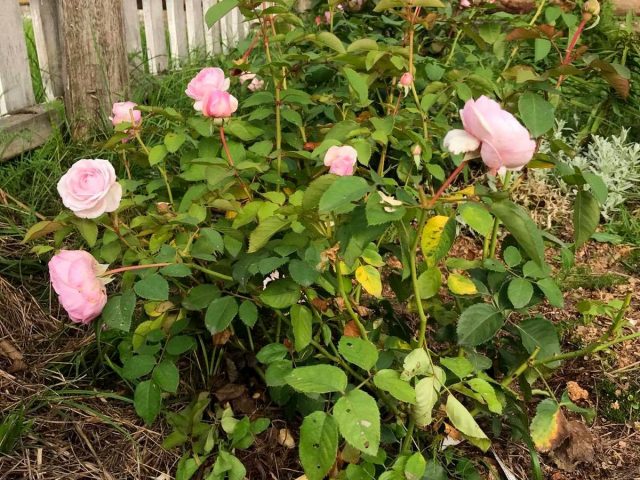
2. Iron deficiency
Iron deficiency or iron chlorosis is most often found in soils with a high lime content. Such soils have a high alkaline reaction (pH = 7 and above). Because of this, the iron in the soil is in a form that is inaccessible to roses.
The first signs of iron deficiency can be noticed on roses already in spring or early summer. The upper leaves of the shoots become lighter, while only the space between the veins turns yellow, and the veins themselves remain green. If the problem is not solved, the veins may also become discolored over time, and brown necrotic spots appear on the leaf tissue.
The situation is aggravated by cool rainy weather, which contributes to the increase of the alkaline reaction of the soil. The plants may develop short-nodes, and the lower foliage gradually becomes lighter. The leaf apparatus may fall off. The wood ripens worse, as a result, winter hardiness decreases.
What to do? If symptoms indicate iron deficiency, one of the following methods should be used:
- leaf treatment with iron salts;
- foliar application of a fertilizer containing iron in chelated form;
- root fertilization with iron sulfate.
3. Phosphorus deficiency
When there is a lack of phosphorus, the rose leaf darkens, becoming dark green with a purple tint. Purple-brown spots or stripes may appear along the edges, especially on the underside of the leaf. A purple tint appears on the petioles, veins and stems. Blind shoots are formed. Flowering is delayed.
What to do? If a phosphorus deficiency occurs, roses need to be fed with superphosphate or any available complex fertilizer.
4. Magnesium deficiency
Magnesium deficiency is first seen on the lower leaves of the bush. The leaves become lighter or redder (depending on the plant variety) between the veins, the edges of the leaf blades curl, the leaf takes on a dome-shaped bend. Later, the lightened areas die off. Plant growth slows down, flowering becomes sparse.
What to do? Magnesium deficiency is replenished with dolomite flour, ash, magnesium sulfate, and potassium magnesium sulfate.
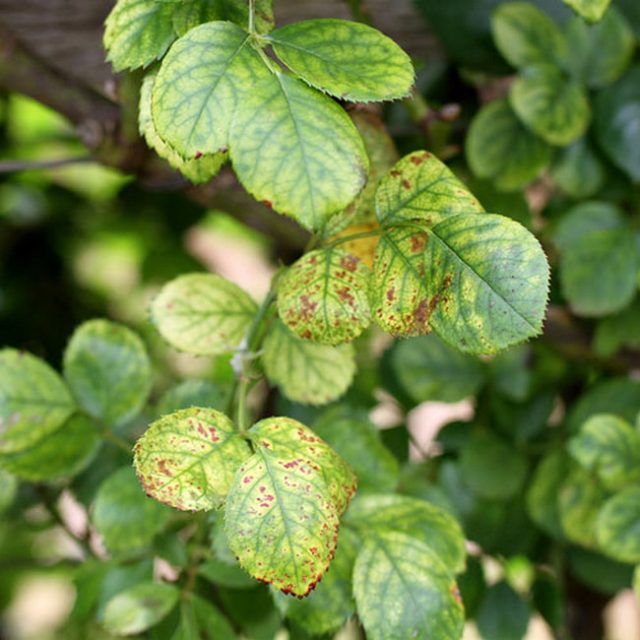
5. Zinc deficiency
Zinc deficiency in roses is manifested by lightening of the edges of the leaf blade and the tissues of the leaflet between the large lateral veins. The tissue around the central and lateral veins remains green. And the closer to the central vein, the wider the green area.
What to do? In case of a severe zinc deficiency, roses need to be fed with superphosphate with zinc, zinc oxide or zinc sulfate.
6. Sulfur deficiency
When there is a lack of sulfur, the young upper leaves of roses become lighter. First the veins, then the interveinal tissues. The leaf can become white with a reddish tint. The plants stop growing, and their susceptibility to diseases and low temperatures increases.
What to do? Feed the plants with a complex fertilizer that contains sulfur – potassium magnesium sulfate, azophoska with sulfur, diammophoska with sulfur.
7. Potassium chlorosis of roses
Potassium chlorosis can be determined by the condition of the edges of the rose leaves. They are covered with brown spots, marginal “burn” – a necrotic strip along the edge of the leaf blade. The branches grow thin and short. Young shoots can dry out.
Most often, the problem occurs on sandy soils and in frequent rainy weather. It makes plants unstable to lack of moisture and low temperatures.
What to do? Feed the roses with potassium magnesium sulfate, potassium sulfate or any available complex fertilizer.
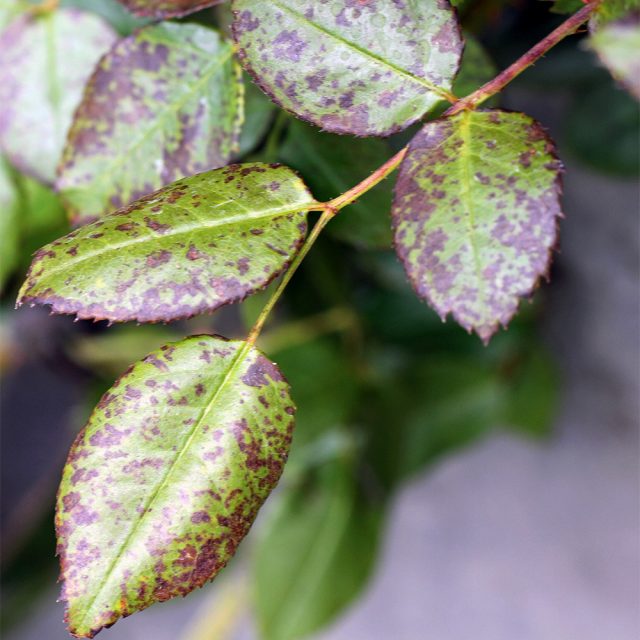
8. Calcium deficiency
Calcium deficiency can be recognized by the change in color of the tops of the shoots. The leaves on them grow light, covered with yellow-brown spots, and more pronounced serration appears on the edges. If the problem is prolonged, the tops of young shoots may die off.
What to do? Feed the plants with calcium nitrate or any available complex fertilizer.
9. Boron deficiency
Boron deficiency can be determined by chlorosis of young leaves. But in addition to the leaf becoming lighter, it becomes thicker and brittle, the growth of young shoots is inhibited, and the growth points die off.
What to do? If there is a lack of boron, it is necessary to feed the roses with a complex fertilizer that contains boron, or add ash to the soil throughout the season.
10. Manganese deficiency
Manganese deficiency in roses is manifested by a change in the color of old leaves between the veins to yellowish-gray or yellowish-green. Yellowed stripes appear as tongues. The spots gradually change color and become nicrotized. In this case, chloroticity begins to appear from the base of the leaf blade.
What to do? If there is a manganese deficiency, it is necessary to treat the rose bushes with manganese sulfate on the leaves or feed them at the root with a complex fertilizer that includes the specified element. Or acidify the soil by adding peat or potassium sulfate, ammonium sulfate, in order to reduce alkaline levels.
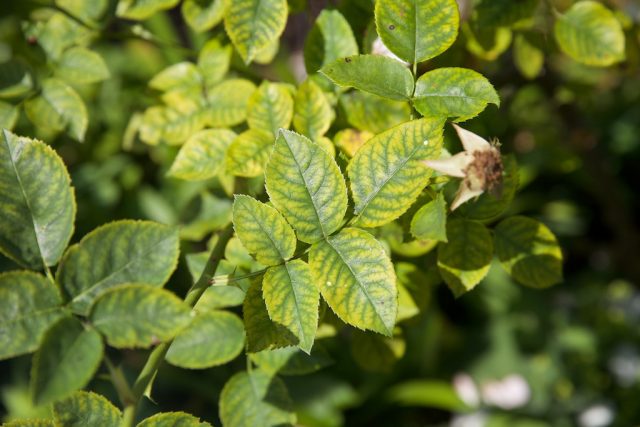
11. Edaphic chlorosis
Edaphic chlorosis of roses can manifest itself due to several reasons. Firstly, from the impact of external unfavorable factors on plants: sudden temperature changes, sudden changes in the chemical composition of the soil, lack or excess of moisture. In this case, new leaves can grow not only unevenly colored with yellow spots or reddish, but also with curved leaf blades, serrated leaf edges. Secondly, sometimes this indicates poor survival of the scion on the rootstock.
What to do? If plants suffer due to external adverse factors, they need to be fed with a balanced fertilizer, for example, «Brexil Combi” on the leaf. Or any other complex fertilizer, which includes not only nitrogen, phosphorus and potassium, but also a set of microelements, for example – “Uniflor Micro”, “Kemira Lux”, “Universal”.
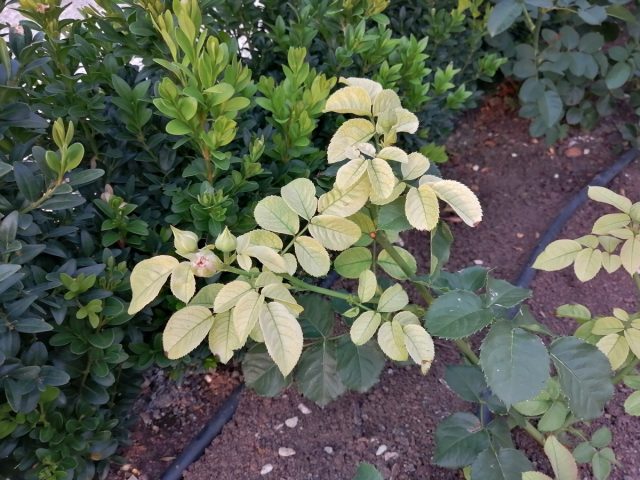
12. Sunburn of roses
Sunburn on roses can appear under the influence of the scorching sun in conditions of insufficient moisture, especially when transplanting indoor roses into open ground without preliminary hardening. In addition, due to improper watering: if drops of moisture fall on the leaves and petals of roses, they work like lenses – refract sunlight and provoke a burn of the tissue.
In case of sunburn, dark spots appear on rose petals. The buds change color. Bronze spots appear on the leaves, and in case of severe burn, the light areas become faded.
What to do? Before planting young plants in a permanent place, it is necessary to gradually harden them – increasing their time in the sun from 20 minutes to a full day, for two weeks. Or after planting – shade them. For adult plants – establish a watering regime.
13. Soaking the roots of roses
With improper watering, prolonged rains, stagnant moisture in the root zone, the roses may develop root rot. Externally, on the bush, it manifests itself as yellowing and shedding of foliage.
What to do? Transplant the plant to another place, with loose, previously prepared soil. When transplanting, you need to cut off the rotten parts of the roots. If necessary, arrange a drainage layer at the bottom of the hole. Adjust the watering regime.
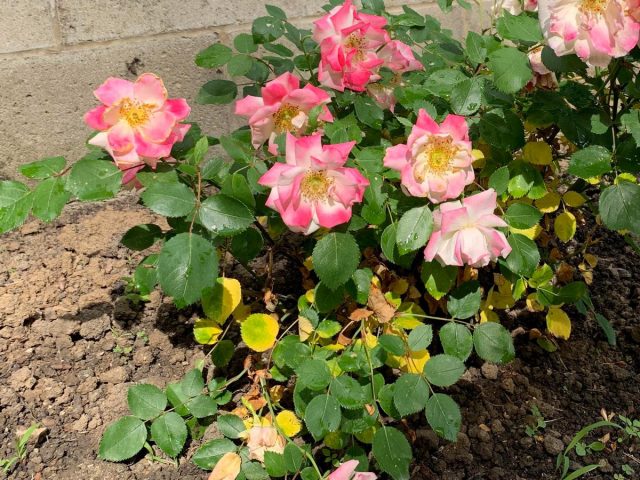
14. Darkening of shoots
The darkening of shoots is detected in the spring, after the roses open. Most often, it is associated with the freezing of bushes. If the bark has turned brown only on one side, it may be a “tan” caused by the bright spring sun.
What to do? It all depends on the degree of damage. If there are signs of damage (drying of the shoot), the branch must be cut to living tissue (capturing several centimeters of living tissue). If not, such shoots often develop normally, nothing needs to be done with them.
15. Bark ruptures
Often in the spring after the roses open up, bark breaks are found on the shoots. The reason is a wet winter.
What to do? If the breaks are small, you can try to disinfect them and bandage them with film, which will need to be removed in the summer. But often the treatment does not help, so it is recommended to cut off the affected shoots immediately after detection, because if this is not done, they will dry out anyway.
16. Blind shoots
Blind shoots are undeveloped shoots of roses, the top of which ends in a thickening and does not have the beginnings of a bud or leaves. On such shoots, not only is there no apical growth, but also no lateral growth is formed. The cause of this phenomenon is considered to be stress experienced by the plant – exposure to low temperatures or other unfavorable weather conditions.
What to do? If a blind shoot is found on a rose bush, it must be trimmed to stimulate growth.
17. Red spots on rose petals
Sometimes red spots appear on rose petals after rain. This phenomenon is typical for certain varieties with light petals.
What to do? Since this phenomenon is not an infectious disease, but only a varietal feature of individual roses, there are no measures to eliminate it.
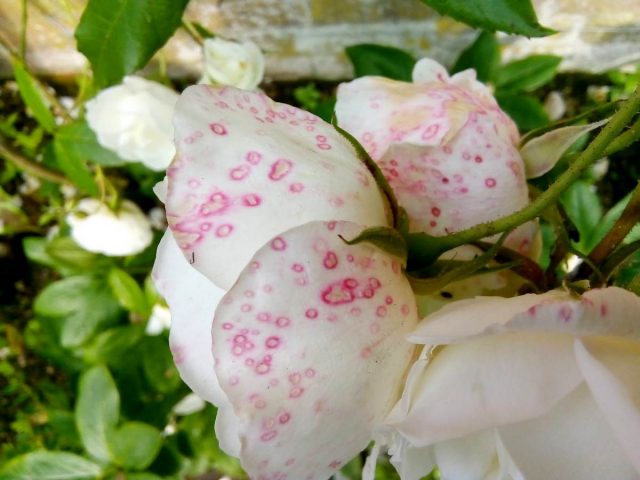
18. The appearance of callus on shoots
Sometimes, the beginnings of roots are found at the base of rose shoots. They usually appear in places where there is damage, for example, when a branch is bent to the ground for winter shelter.
What to do? In spring, such a shoot can be left to bloom, and cut out in autumn, as it becomes more fragile.
19. Pesticide poisoning
If pesticides are used unregulated to protect roses from diseases and pests, the plants can be harmed. Poisoned rose bushes slow down in development, the edges of their leaves curl. But poisoning can be caused not only by pesticides, but also by large doses of fertilizers.
What to do? You can try to water the bush with a large amount of water to wash the concentrate into deeper layers of soil or transplant the plant to a new location.
20. Physiological aging
Natural aging of a bush is manifested in a slowdown in growth processes, a decrease in the quantity and quality of flowering, and a general loss of the plant’s decorative qualities.
What to do? The aging of a rose bush can be slowed down by following agricultural practices, the most important of which are proper pruning and fertilizing of plants.


